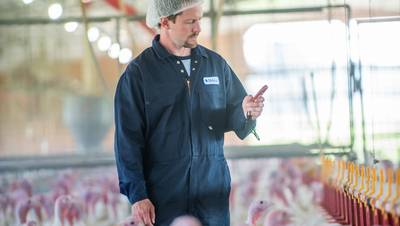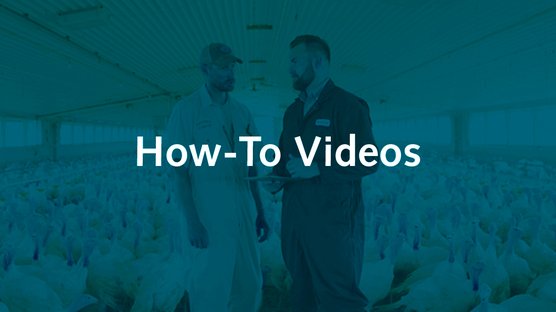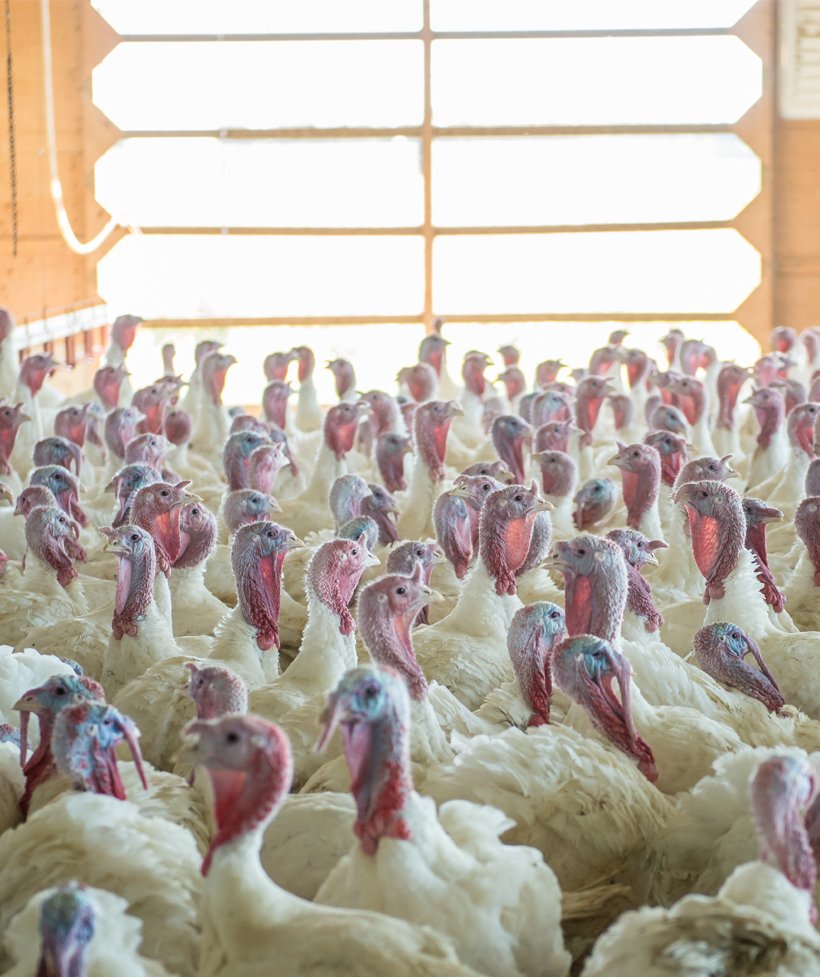
Published on May 9, 2019
Prepare for summer with tunnel ventilation
It’s that time of the season… when summer is on its way and turkey farmers need to start thinking about how they will keep their feathered friends cool. Environmental comfort is crucial to turkeys’ health and development. Read on to discover how to best accomplish this with the tools available in a modern tunnel ventilated barn.
Temperature and bird performance
In the summer, the goal is to keep the birds as comfortable as possible, or what’s known as the thermal neutral zone. Below is a chart produced by NC State University that explains how gradual increases in temperature can affect bird comfort and performance. Mature birds, 12 weeks or older, are most comfortable in the range of 55⁰F-75⁰F (12.8⁰C-23.9⁰C).
Comfort zone and performance
| Temperature | Effects |
|---|---|
| 13°-24°C (55°-75°F) | Thermal neutral zone - bird does not need to alter its basic metabolic rate to maintain body temperature |
| 24°-29°C (75°-85°F) | Slight reduction in feed consumption, feed conversion compromised - panting |
| 29°-32°C (85°-90°F) | Feed consumption falls further, weight gains lower, feed conversion further compromised - excessive panting |
| 32°-35°C (90°-95°F) | Feed consumption continues to drop, birds in survival mode |
Tunnel ventilation
Maintaining the thermal neutral zone can be accomplished by utilizing tunnel ventilation. The primary goal of tunnel ventilation is to provide the flock with the appropriate conditions based on the age, weight and density of the flock. The three main reasons to use tunnel ventilation are to remove heat from the house, remove heat from the birds, and reduce the temperature of incoming air.
Maintaining and maximizing your system
Maintaining fans and cooling systems are the backbone for consistent results. Worn belts or dirty shutters can easily reduce the air speed, and therefore the wind chill effect felt by the birds. The wind chill chart below shows that small decreases in air speed can substantially reduce the birds’ comfort level. The difference in 400 fpm to 600 fpm is nearly double the effective wind chill. Be sure to maximize your air speed first before adding water to the system. Many people see the best results by not fogging or using cool cells before the inside temperature reaches 87⁰F (30.6⁰C) or when the relative humidity is below 75%.
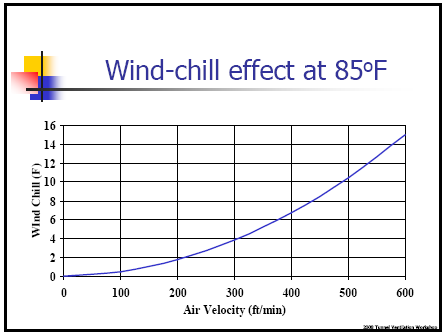
When it is appropriate to add water to the system, remember the 80/80 rule: at 80⁰F (26.7⁰C) the relative humidity (or Rh) will be 80%. This occurs on average between 10:00 am and 10:00 pm, however, there are exceptions. The graph below shows that whenever the temperature reaches 80⁰F (26.7⁰C), the Rh is at the 80% mark. Adding moisture at this time will result in wet floors and hot birds because the air is saturated. For every 1 degree of cooling by adding water, the relative humidity goes up 2.5%. For example, at 10⁰F (-12.2⁰C) of cooling, you are adding 25% more humidity to the barn. You can see as the air heats up, the Rh falls, allowing for moisture to be added and cooling to take place.
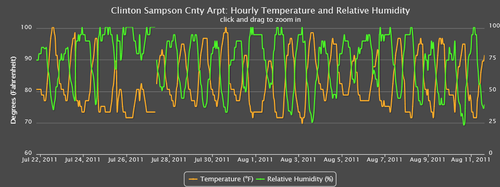
When working with your tunnel ventilation system, always keep in mind to first add air speed, and then when appropriate, add evaporative cooling to reach and maintain the thermal neutral comfort zone. This concept can be easily misunderstood, but achieving this comfort range will ensure the birds are healthy and performing at their best.

